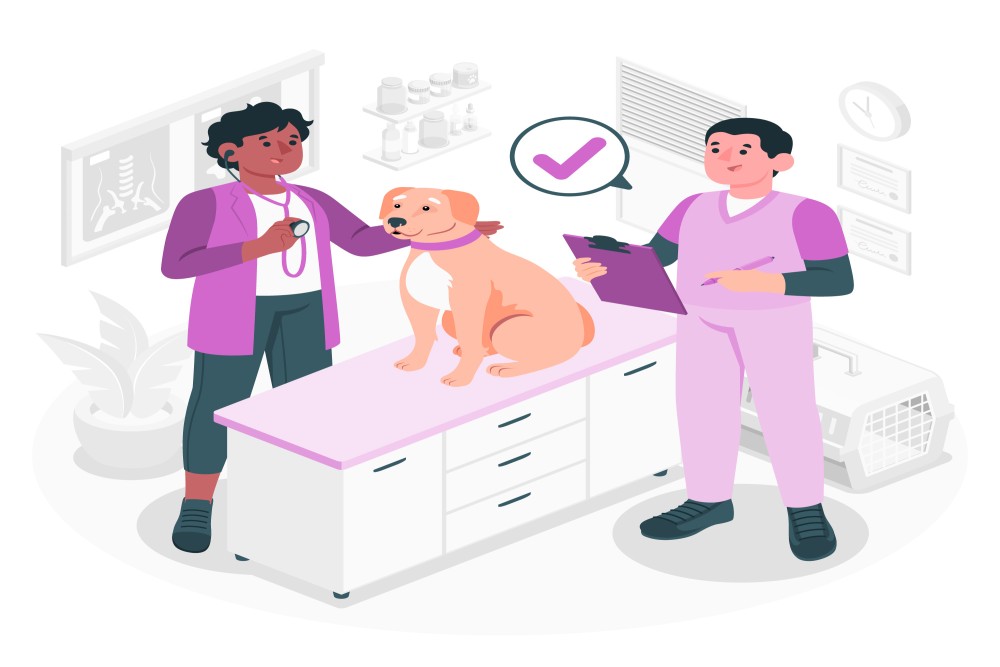
The Life Cycle of a Mosquito: Understanding the Stages and Biology
Learn about the life cycle of a mosquito, including stages from mosquito eggs to adult mosquitoes, and discover effective mosquito
Call for a free estimate
Where are you located?

Share This Post
Discover effective dog tick removal using fine-tipped tweezers to grasp the tick’s head close to the skin safely. Follow Mosquito Man’s expert advice for protecting your pet from tick-borne diseases. Learn about our tick control services in Canada.
For removing ticks safely from dogs, fine-tipped tweezers are the best tool. Experts, like those at the Humane Society of the United States, recommend them. They help to firmly grasp the head of the tick without squeezing its body, lowering the infection risk for your pet. This dog tick removal tool ensures a safer and more effective tick removal process.
Curved hemostats can be an effective tool for removing ticks. They let you grab the tick close to your pet’s skin, making it easier to take out without leaving parts behind. Many pet owners find curved hemostats helpful, though they aren’t as commonly recommended as tweezers. They are still a reliable option for tick removal.
Tick removers are vital tools in keeping your pet healthy. These tools are made for handling ticks, ensuring they are fully removed and reducing infection risk. In pet care, prevention matters, so having a tick removal tool is important. It provides an easy way to manage ticks and supports overall health for your pets.
Learn more: What Are Ticks Good For in the Ecosystem? and How to Remove a Tick from a Cat
Using tweezers with fine tips is the best way to securely grab a tick on your dog. Make sure to grab the tick close to your pet’s skin. Be careful not to squeeze the tick, as this can release harmful bacteria. This careful method helps ensure the tick is taken out in one piece.
Pulling the tick straight out is crucial during the removal process. This technique helps prevent the tick’s mouthparts from breaking off and staying in your pet’s skin. Pulling straight is important for safe removal and for reducing future tick bites and diseases. It’s a key part of tick removal that pet owners should follow.
Making sure the tick’s mouthparts do not stay in the skin is essential. To prevent this, pull the tick out slowly and steadily, and check thoroughly after removal. If any part of the tick remains, it can cause irritation or infection. Regularly check and care for the area to support healing and prevent further issues.
Using these tools and techniques can help keep your dog safe from ticks. At Mosquito Man, we aim to give you the knowledge and resources needed to protect your pets.
Keeping your dog healthy after tick removal is important to prevent infection and complications. Here’s how to care for your pet:
Once you remove a tick from your dog, follow these steps:
Sometimes saving the tick for testing can be helpful:
Watching your dog after a tick bite is crucial to catch any diseases early.
Watch for symptoms like:
Talk to your vet if you notice:
Regular grooming is important for keeping ticks off your pets. By checking your dog’s coat or fur, you can find and remove ticks early. Use a fine-toothed comb to look for ticks during dog grooming sessions. This not only helps with tick removal but also keeps your pet healthy. Regular inspections will help you catch any unwanted parasites and keep your pet tick-free.
Natural tick repellents for dogs can protect them without using chemicals. Essential oils like citronella and neem oil are good home remedies. These herbal options are safe for pets and gentle on their skin. Before using these natural solutions, make sure they are diluted correctly and check with your vet to ensure they suit your dog’s needs.
Tick collars for dogs provide continuous protection by slowly releasing insecticides. This neckband spreads a tick repellent over your pet’s body, offering long-lasting defense. A tick collar creates a consistent barrier against ticks, keeping your pet safe both indoors and outdoors.
Oral tick prevention medications offer systemic protection as they work through your pet’s bloodstream. These medicines provide long-lasting protection and are easy to give. Since they are tasty, monthly treatment becomes simple and stress-free for both pets and owners. Oral medications ensure complete body coverage against ticks.
Topical treatments, like spot-on applications, are effective against ticks. They work by being absorbed into the skin, forming a protective barrier that repels ticks. These treatments are easy to apply and can be used often for strong protection. Topical products are a great option for pet owners wanting simple and effective tick control.
To keep products working well, use preventative measures regularly. Most treatments need monthly application for effective tick control. Depending on where you live, some products might be best used year-round or seasonally. Follow the recommended schedule to keep your pet fully protected from ticks.
By combining preventative steps with the right products, you can protect your pet from ticks effectively. A consistent routine will help keep your dog happy and healthy.
Keeping your yard in good shape is important for reducing tick exposure. By mowing the grass and clearing away fallen leaves and branches, you eliminate places where ticks like to live. A tidy yard makes it harder for ticks to thrive. Here are some simple tips:
Landscaping helps control tick populations by changing the environment to be less inviting for them. Thoughtful landscaping can keep ticks from entering your yard and reduce the risk of them getting on you or your pets. Try these ideas:
Yes, some plants naturally keep ticks away. Adding these to your garden can help reduce ticks without using chemicals. Here are some plant options:
A tick’s life cycle includes several stages:
Ticks pass diseases to dogs by carrying harmful germs. When a tick bites a dog, it can transfer bacteria and viruses into the dog’s body. This puts your pet’s health at risk, including the potential for Lyme disease. Regularly check your dog for ticks after outdoor activities and talk to your vet for ways to protect your pet.
Ticks do well in certain environments. They like:
By controlling these conditions in your yard, you can make it harder for ticks to survive.
Many pet owners think that using oils to suffocate ticks is a good way to remove them. However, this method is usually ineffective and can be harmful. Applying oils might cause a tick to release more saliva into the skin, which can increase the risk of infection. Instead of oils, it’s better to use methods recommended by veterinarians for safe tick removal.
Burning a tick off your dog might seem quick, but it can be dangerous. Trying to burn a tick can harm your dog by causing burns or injuries. It can also make the tick regurgitate into your dog, increasing the chance of spreading diseases. To keep your dog safe, use safer ways to remove ticks, like fine-tipped tweezers or tick removal tools.
Crushing a tick can spread diseases. If you crush a tick, its fluids, which may contain harmful germs, can come into contact with you or your pet. Safely dispose of ticks by putting them in rubbing alcohol or flushing them down the toilet without crushing them. This ensures safe tick removal and keeps mouthparts from being left in the skin.
Pet owners can find many educational resources on tick prevention. These include guides and articles with helpful information on protecting pets from ticks. Veterinary clinics and online platforms offer these resources so pet owners can stay informed.
Community awareness is very important for preventing tick-borne diseases. Public health education helps people understand tick prevention strategies and the risks of tick bites. By raising awareness in the community, we can work together to reduce tick-borne diseases and improve public health.
Working together is key for pet owners to control ticks. By sharing ideas and teaming up, communities can take stronger action against ticks. Community involvement can include neighborhood clean-ups, sharing prevention tips, and supporting local tick education programs to keep everyone informed and protected.
How can I safely remove a tick from my dog’s skin?
To remove a tick safely, use fine-tipped tweezers to grab the tick as close to your dog’s skin as possible. Pull straight up with steady, even pressure. Don’t twist. After removing it, put the tick in a jar with isopropyl alcohol to kill it, and clean your dog’s bite area.
Is it safe to twist a tick off my dog?
Twisting a tick off isn’t safe because it might leave parts of it behind in your dog’s skin, which can cause irritation or infection. Always pull straight, using even pressure to make sure you get the whole tick.
What should I do if remains of a tick are stuck in my dog?
If parts of the tick are still in your dog, try to gently remove them with sterilized tweezers. If you can’t get all of it out, see your vet to prevent infection or irritation.
Can ticks cause neurological issues in dogs?
Yes, ticks can spread diseases like Lyme disease, which could cause neurological problems in dogs. Watch for signs like unsteady movement or behavior changes after a tick bite.
Why place a tick in isopropyl alcohol after removal?
Putting a tick in isopropyl alcohol kills it safely. It also lets you keep the tick for identification if your dog gets sick later.
Can tick bites cause an enlarged heart in dogs?
Tick-borne diseases like heartworm can affect a dog’s heart. Regular vet check-ups and prevention help keep your dog healthy.
Where on a dog’s body should I check for ticks after outings?
Look for ticks near the ears, around the abdomen, between toes, and in the armpits. Ticks like warm, moist spots on the body.
What are some precautions to take during tick removal?
Be careful when handling ticks. Don’t crush them. Wear gloves and disinfect the area after removing the tick. Follow proper steps to avoid spreading disease to yourself or your pet.

Learn about the life cycle of a mosquito, including stages from mosquito eggs to adult mosquitoes, and discover effective mosquito

Mon-Fri: 12:00 AM - 12:00 PM
Sat-Sun: 12:00 AM - 12:00 PM
Headquarters
2401-224 King St W,
Toronto, ON M5J 0A6, Canada
